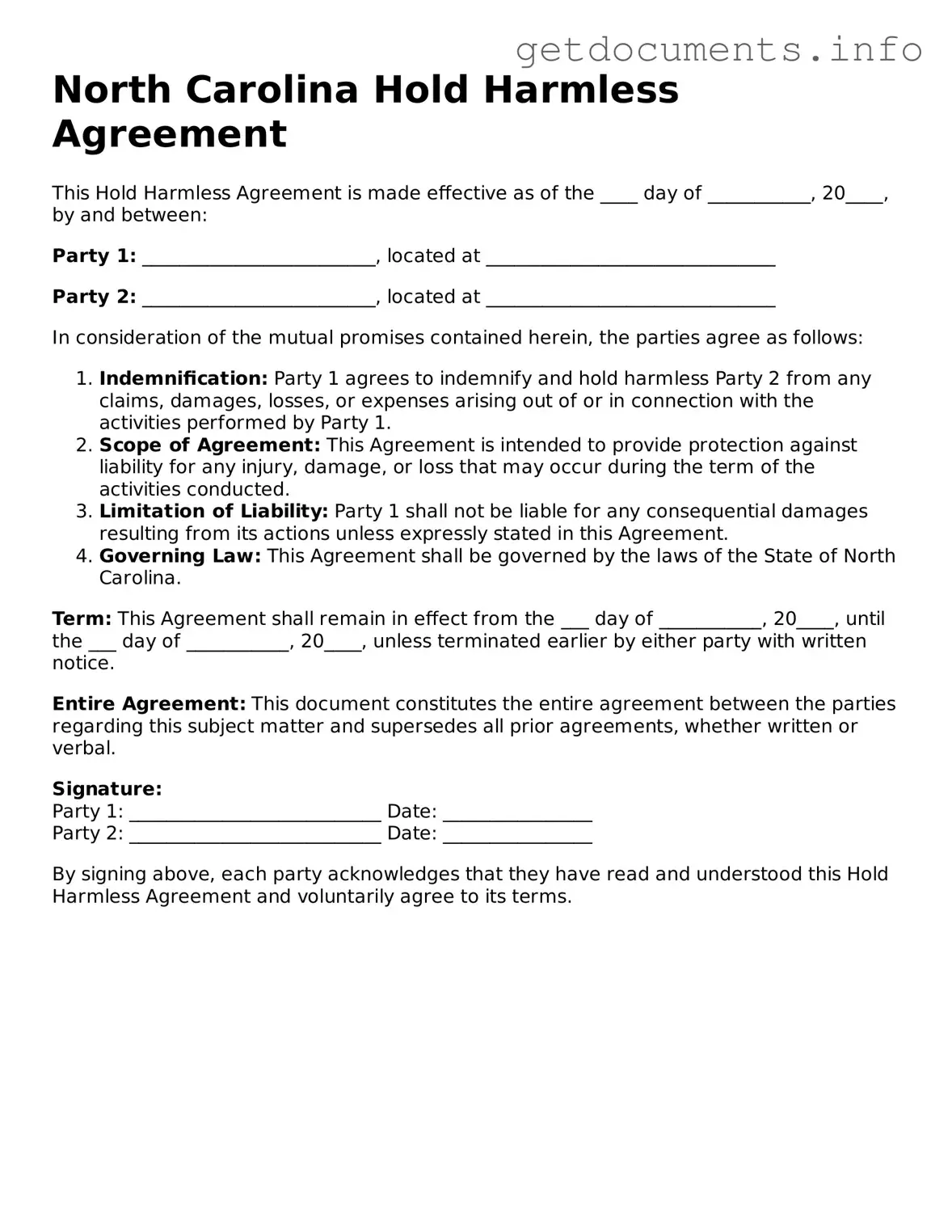Free Hold Harmless Agreement Template for North Carolina
The North Carolina Hold Harmless Agreement form is a legal document designed to protect one party from liability for certain risks or damages. By signing this form, individuals or organizations agree not to hold another party responsible for potential losses that may arise during specific activities or events. Understanding this agreement is essential for anyone looking to safeguard their interests in various situations.
To take the next step in protecting yourself or your organization, consider filling out the Hold Harmless Agreement form by clicking the button below.
Access Hold Harmless Agreement Editor
